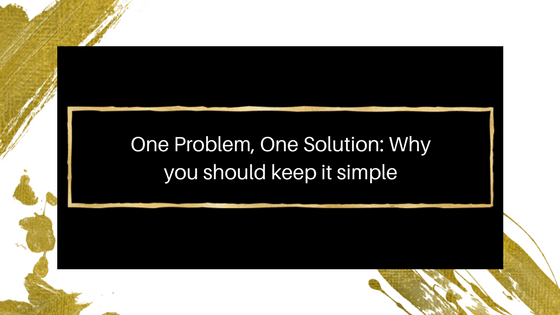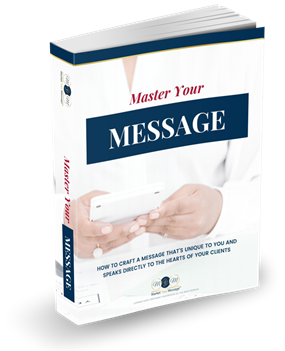Here’s a scenario we all go through: you decide to write a quick update and it turns into a rambling, 3,000-word novelette that describes everything from where to find a graphic designer to how to design a business card in no time.
Of course, you can increase traffic with a well written 3,000 word blog post but these ramblings aren’t usually focused. There are so many points to cover and you normally skip from one point to another.
Logo design leads to business card formatting which leads to taglines which leads to ideal client avatars. Avatars lead to…well, now I’m rambling. I know you want to provide the best information for your audience and cover EVERY important detail but soon you’ll only overwhelm both you and your client.
One Problem, One Solution
Most people don’t want all the details that go into solving their problem. If your course helps your clients identify their ideal client, then they may not need information about choosing a domain name. While it might seem relevant, it’s just a distraction.
You can also overwhelm your customer if your topics are too broad. Trust me, you don’t want that because you’ll never see her again. She won’t think you’re a bad coach but she’ll be convinced that she’s a bad student.
There’s another issue with including too much in one course: depth of knowledge. You end up with very thin coverage of important topics when you include too many different topics. You should try to focus your course on ONE problem and ONE solution. That way you can dig deeper and give your clients valuable content that they won’t find anywhere like:
- Case studies
- Worksheets
- Planning documents
- Checklists
- Multi-media content
These are the valuable things your audience is paying for because it’s hard to find elsewhere. By focusing your course on a single problem, you’ll be able to create custom solutions and resources for your beloved clients. If you focus on a broader topic, you’ll be forced to be cheap with all the extras.
Don’t get me wrong, there’s plenty of room for a massive, all-inclusive eCourse. Marie Forleo’s B-School course is a perfect example. Still, if you decide to go that route, you’ll NEED to:
Expand the course length to accommodate all the extra information. It’d be best to break it up in a series of mini courses.
Increase the cost of the course. If your audience is ready to buy a high—ticket multi-media course then give the people what they want! Just remember that more information equals a higher price point.
You must also remember that a large course is harder to sell and it’s not just because of the price. The buyer has more time to commit to that particular course and she’ll carefully consider that before buying the course. A smaller, single problem course is much easier to complete, understand and be successful with. Click the button below to join us in my Private Facebook community. This month we are putting together our e-course. We’d love to have you.


